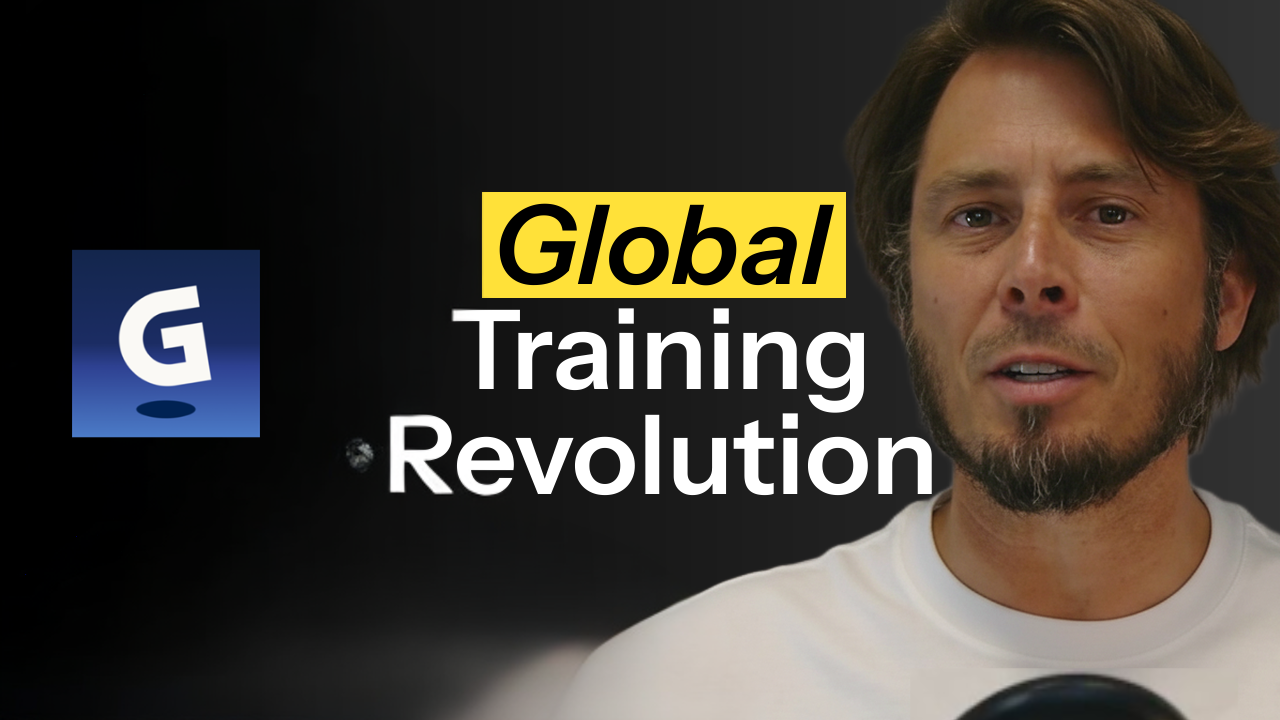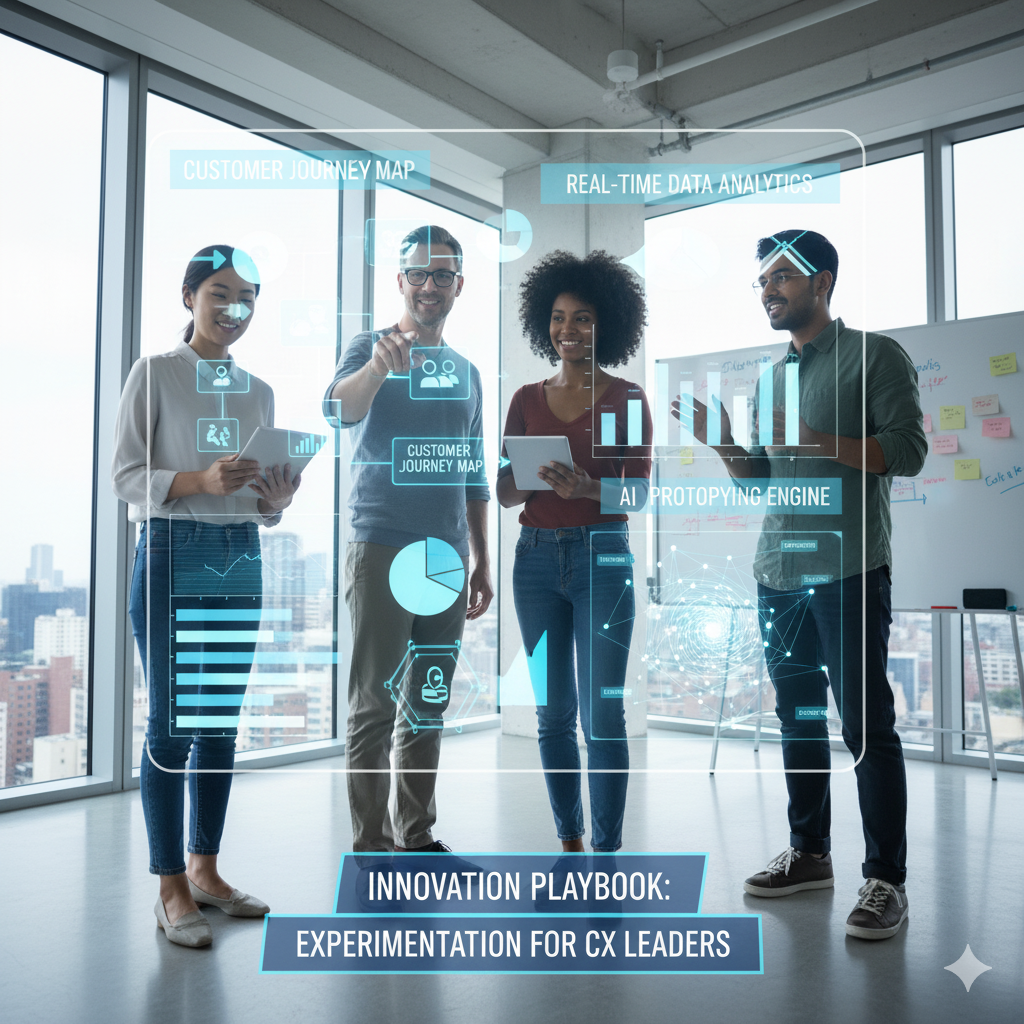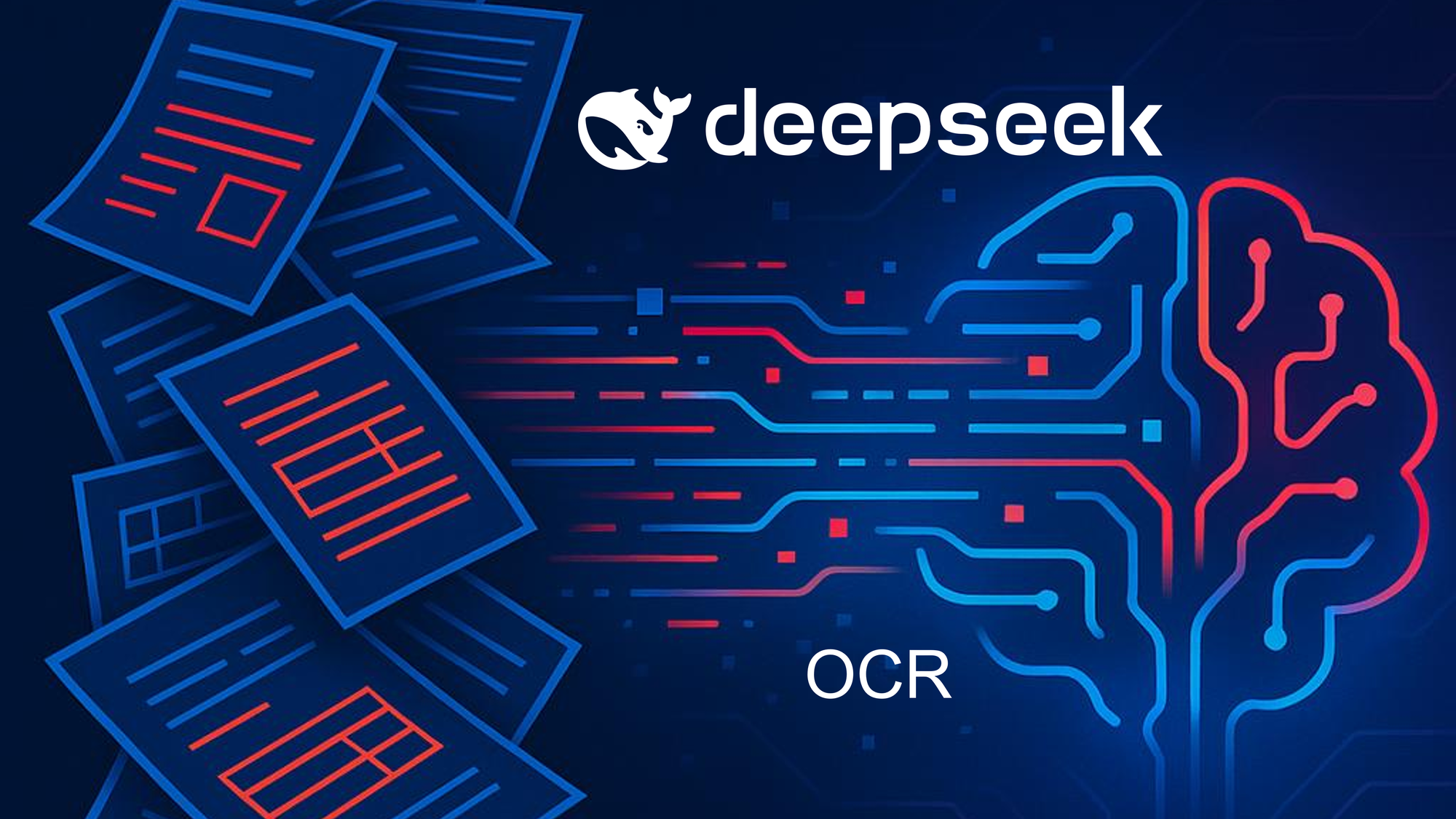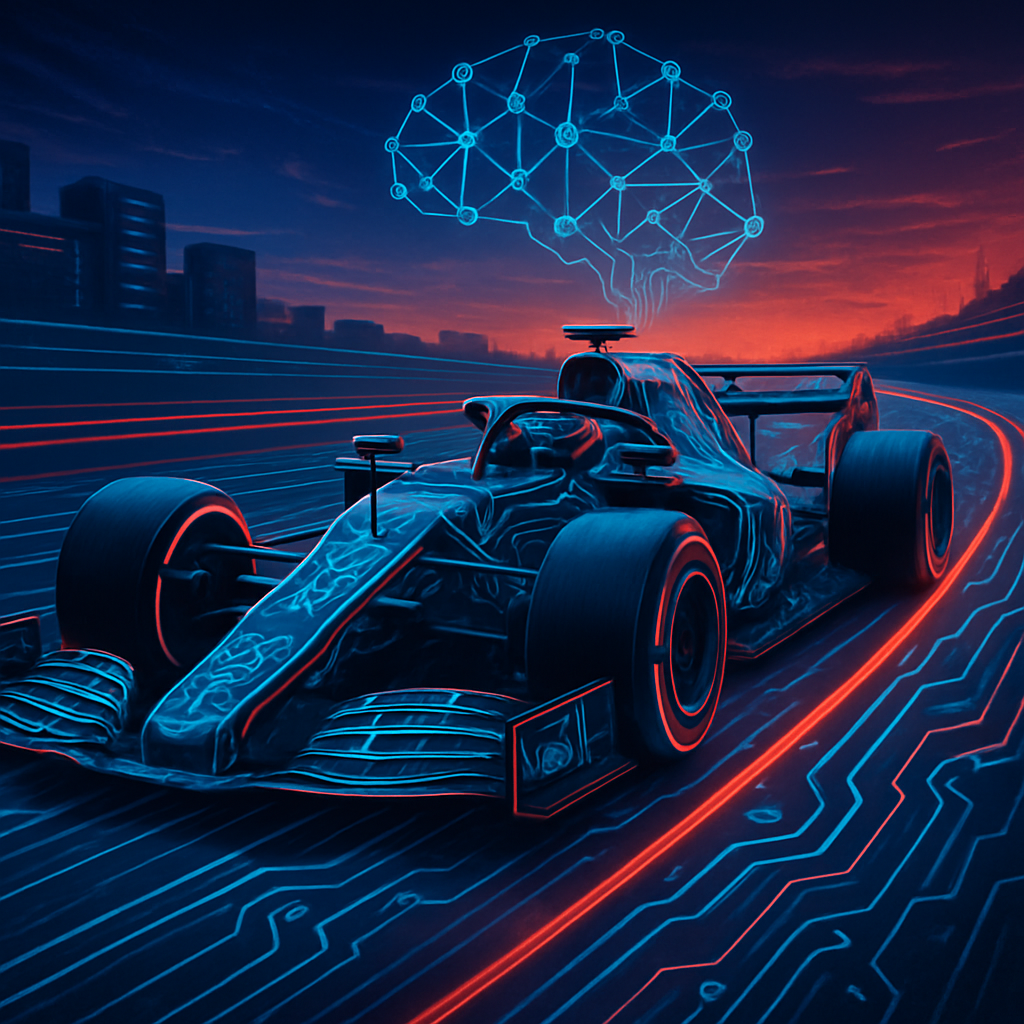Fast-food leaders are giving AI another shot at the drive‑thru, with a sharper focus on fit-for-purpose deployment and human oversight. According to ZDNET’s1 report, early missteps (like misheard orders and odd add‑ons) have pushed chains to rethink where, when, and how AI belongs in live operations—trading “always-on automation” for targeted, voice-first pilots and trusted tech partners. The result is a more pragmatic phase that prioritises operational relief for staff, better customer experiences, and real productivity gains—without repeating past mistakes.
A Second Serving of AI: New Approaches, Smarter Lessons
- Earlier setbacks: Fast-food chains previously pulled back on drive-thru AI when customers reported errors, odd menu combinations, and frustrating delays or even “trolled” the systems with prank orders.
- Learning and iterating: After these experiences, businesses like Taco Bell are refining AI’s role—choosing to use AI selectively during quieter periods, while falling back on human staff during peak rushes. This hybrid approach allows both AI and employees to play to their strengths, minimising disruption while maximising service consistency.
What’s New in the Latest Drive‑Thru Pilots
- Targeted deployment vs. blanket automation: Chains are testing AI where it fits best, not everywhere all at once. Taco Bell is exploring pausing AI during peak rushes and emphasising employee monitoring to catch errors in real time.
- Voice-first customer interactions: AI voice is assuming a larger role in customer service for ordering, reflecting an industry-wide shift toward natural language interfaces.
- Pragmatic experimentation: Emphasises learning which models, methods, and partnerships actually improve productivity, customer satisfaction, and profitability.
Generative AI Voice Tools: Quietly Shaping Customer Experience
- Voice technology advances: McDonald’s and other brands, such as Wendy’s, are now leveraging advanced natural language models, powered by services like Google Cloud, to deliver more accurate, responsive, and conversational customer interactions at the drive-thru window.
- Insights for CX, Contact Centres & BPOs: This shift mirrors what’s happening in modern contact centres—where AI augments human agents, reduces wait times, helps with multi-part queries, and frees people to focus on the customer moments that matter most.
How This Round Differs from Earlier Attempts
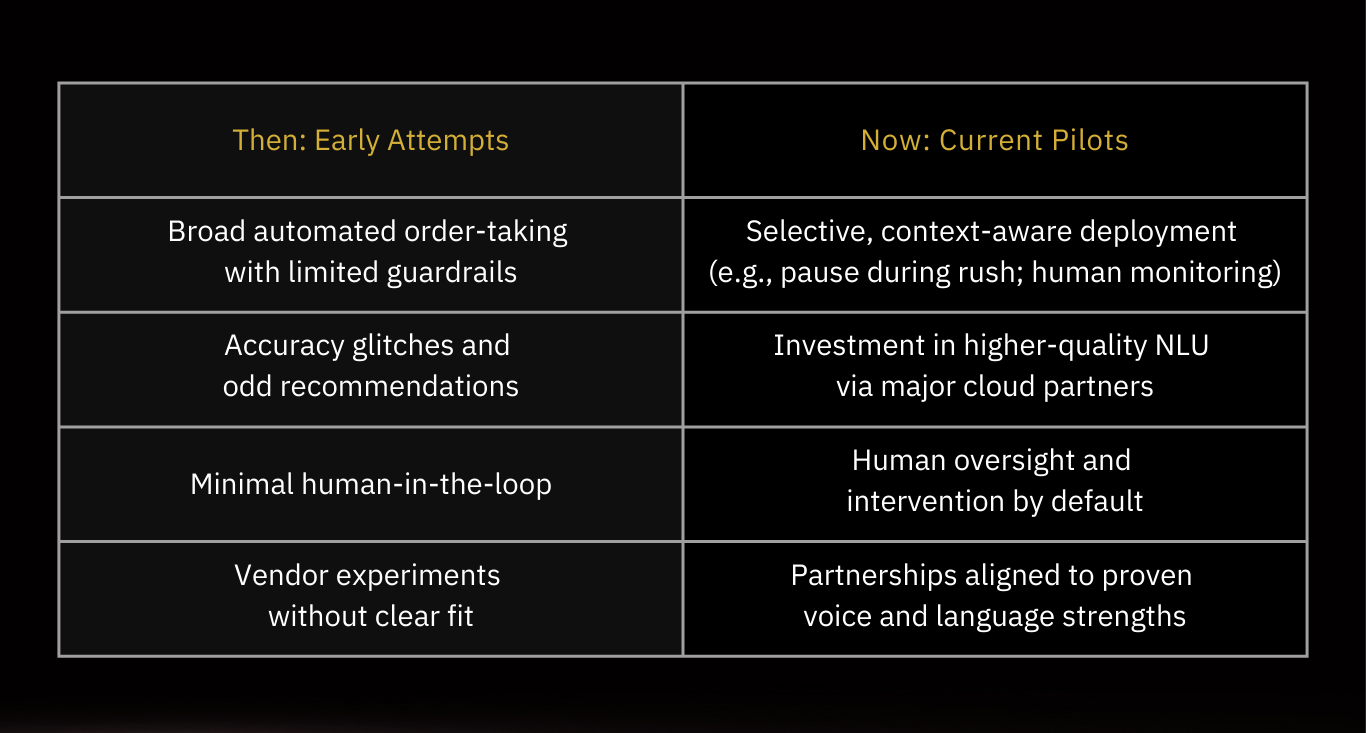
Notable example: McDonald’s transitioned from an IBM-led AOT pilot (which sometimes added items or made nonsensical suggestions) to Google Cloud’s voice/NLU stack, aimed at achieving a more reliable understanding and flow.
Expected Benefits—and the Risks to Watch
- Benefits (goals of the pilots):
- Speed and throughput: Relieve pressure on staff managing drive‑thru, counter, and mobile orders.
- Consistency and accuracy: Better NLU should reduce misheard items and friction.
- Upsell opportunities: Voice agents can consistently prompt add-ons—if they remain contextually appropriate and not annoying.
- Risks highlighted by past attempts:
- Misrecognition and “hallucinations”: Incorrect items and strange combinations (e.g., “bacon with an ice cream cone”) erode trust quickly.
- Customer reaction/trolling: Novelty can invite misuse (e.g., frivolous orders), resulting in delays and additional costs.
- Operational mismatch: Always-on automation during peak volume can worsen queues if error rates rise.
What the source does not specify: details about performance with accents/noisy environments and quantified trust/CSAT shifts are not provided in the ZDNET article.
Implications for CX, BPO & Contact Centre Leaders
While the use case is drive‑thru, the lessons map directly to omnichannel service environments:
- Conditional automation beats one-size-fits-all: Turn AI on where it shines (routine intents, predictable menus/flows) and keep humans in control during peak, high-stakes, or ambiguous moments.
- Human-in-the-loop as a design pattern: Build real-time escalation paths and agent override tooling to correct AI misfires instantly.
- Partner for strengths, not hype: Choose vendors with proven NLU, domain adaptation, and production-grade voice stacks; pilot before scaling.
- Measure what matters: Focus on accuracy, handle time, recovery rate after AI errors, and customer satisfaction—not just volume automated.
- Governance and training data: Define data retention, redaction, and consent; create feedback loops so agent corrections retrain models safely and quickly.
A Real-World Test Bed for AI & CX Futures
The fast-food industry’s willingness to “try, fail, and try again” offers a practical masterclass in deploying AI where customer experience is king. As customer patience and expectations evolve, so too must our willingness to experiment and learn.
For CX leaders, the key takeaway is simple: Embrace a spirit of curiosity and continuous improvement. Every customer touchpoint—whether over the phone, chat, or even at the drive-thru—can be positively elevated by thoughtful, collaborative AI and human service.
In the era of AI-powered CX, progress is about partnership, empathy, and readiness to evolve—one order, one call, one conversation at a time.
1To learn more about these innovations and their implications for customer service best practices, visit the original ZDNet article.



![Werner [1010]](/content/images/2025/08/LI-Profile-Picture--4--1-1.png)


